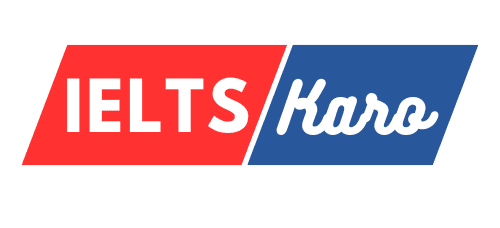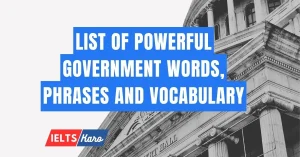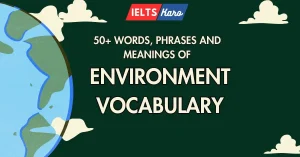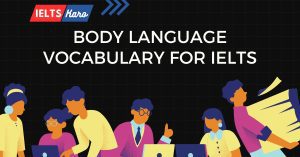Introduction
Preparing for the IELTS Listening test can be a daunting task, specifically when it comes to mastering the map and diagram labelling sections. As someone who has had an 8.5 in IELTS Listening, let me show you how to solve the Maps and Diagram Labelling parts via Listening Map Vocabulary.
These parts of the test require not only a good understanding of English but also the ability to quickly and accurately interpret visual information. In this guide, we will understand the essential vocabulary and strategies needed to ace the map and diagram labelling sections of the IELTS Listening test. Here is a short video on how to attempt a Listening Maps section:
Although you can get a map or a diagram in any part of the IELTS Listening exam, it is most commonly found in Section 2. And the video above does a good job in explaining how to solve just that!
Related Links on Listening:
IELTS Listening Form Filling Questions: 6 Powerful Strategies
Master IELTS Listening with an 8.5 Achiever’s Strategies
Understanding IELTS Listening Maps
Maps in the IELTS Listening test come in various forms. You might be asked to label a city map, a building layout, or even a park. Understanding the common features of these maps is crucial for success. Outlined below, you will find the most common words and their meanings so that you can understand how to navigate the maps while listening to the audio.
Types of Maps in IELTS Listening
There are several types of maps you might encounter:
- City Maps: Highlight streets, landmarks, and transportation routes.
- Building Layouts: Show different rooms, floors, and exits.
- Parks and Natural Areas: Indicate trails, bodies of water, and recreational areas.
Common Features of Maps
Regardless of the type, most maps will include:
- Directions: North, South, East, and West (can also be stated as Top, Bottom, Right, Left)
- Landmarks: Significant places like statues, fountains, or buildings.
- Routes: Paths, roads, and trails.
Essential Vocabulary for Map Labelling
To effectively label maps, you need to be familiar with certain vocabulary. Let’s have a look at the following Listening Map and understand its vocabulary:
Croft Valley Park Map Labelling – Practice Test with Script and Answers
The following map shows the Croft Valley Park. Let’s understand the different words and how you can find out the right answers.
The basic arrangement hasn’t changed for the park. It still has two gates, North gate and the South Gate and a lake in the middle (in the centre, as evident, you can see that the lake is in the centre of the map.)
Cafe is still at the same place, looking out at the lake and next to the Old Museum. (By now you should know that D is the right answer as it is the ONLY option close/next/right to the museum and overlooking the lake.)
Toilets are a bit out of the way at present, near the Adventure Playground at the corner of your map. (Be quick in identifying that B and C are close to Adventure Playground, but only C is at the corner of the map, hence C is the correct answer.)
Formal Gardens used to be behind the Old Museum (which means they are NO more near the Old Museum, so get ready to know the right location), but we’ve now used the space near the South Gate between the park boundary and the path that goes past the lake towards the Old Museum. (As evident, between means middle or centre, and hence, G is the correct answer).
Outdoor gym for adults is by the Glass Houses just to the right of the path from the South Gate. You have to look for it as it’s a bit hidden in the trees. (You should now understand that by the Glass Houses means either it is H or F. Since the lady has clarified it is HIDDEN between the trees, the only right option that we can see is H.)
Our skateboard ramp is quite successful and in constant use during the evenings and the holidays. It’s near the Old Museum (D is NOT the right option as D is for cafe), at the end of the little path that leads off from the main path between the lake and the museum. (Have a look at the map, the little path leading off is leading to A as that is the ONLY sensible option near Old Museum.)
We also have Wild flowers for the bees! It’s on the bend that goes around the east side (do you see the bend?) of the lake, just south of the Adventure Playground. (This is clearly E, because not only it is the ONLY option at the bend but also at the south of the playground.)
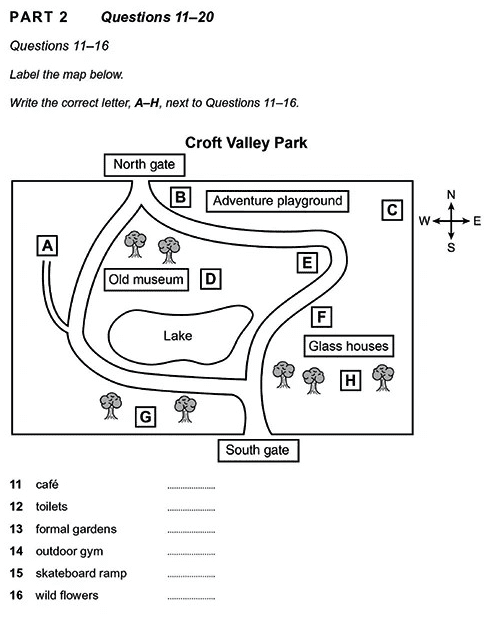
Town Library Listening Map Labelling – Practice Test with Script and Answers
This is a popular and common practice question for IELTS Map Labelling taken from the IELTS Cambridge Practice book. Let’s have a look at the vocabulary for this. If you pay close attention, you can see the “Entrance” at the bottom, which means this is where the speaker will be starting from. Hence, this is your nice starting point, allowing you to easily navigate and get in line with the speaker’s recordings.
The script begins from here:
Well, as you see, my desk is just on the right as you go in, and opposite this the first room on your left has an excellent collection of reference books and is also a place where people can read or study peacefully.
Explanation: The correct answer for 11 is H, because it is in front of the librarian’s desk.
Just beyond the librarian’s desk on the right, is a room where we have up to date periodicals such as newspapers and magazines and this room also has a photocopier in case you want to copy any of the articles.
Explanation: The next question that we need to answer is 12, and when something is just beyond, it means it is close to a particular location. In this case, the room number is 12, and the correct answer is G – Periodicals.
If you carry straight on, you’ll come into a large room and this is the main library area. There is fiction in the shelves on the left, and non-fiction materials on your right, and on the shelves on the far wall there is an excellent collection of books relating to local history.
Explanation: Carry straight on means going forward. On the far wall means at the end of the wall. Hence the answer to 13 is D – Local history collection.
Through the far door in the library just past the fiction shelves is a seminar room, and that can be booked for meetings or talks, and next door to that is the children’s library, which has a good collection of stories and picture books for the under elevens.
Explanation: We all know where the seminar room is, however the children’s library is right next door to it. Hence, the correct answer for 14 is B – Children’s books.
There’s a large room to the right of the library area, that’s the multimedia collection.
Explanation: To the right we only have one option, and that is the 15, which is a large room. Hence, the correct answer for 15 is F – Multimedia.
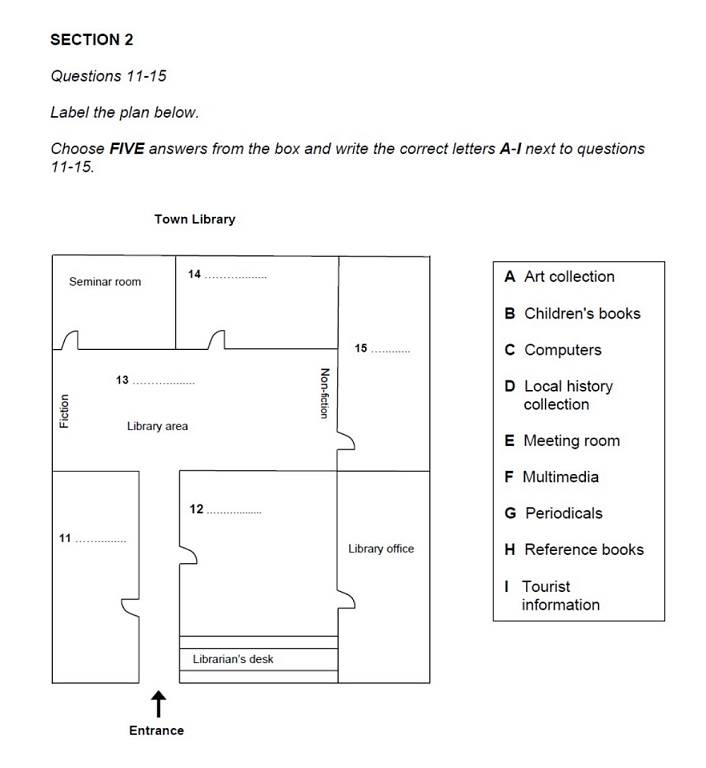
Cardinal Directions
- North (N) – Top, Up
- South (S) – Bottom, Down
- East (E) – Right
- West (W) – Left
- Northeast (NE) – Top Right
- Northwest (NW) – Top Left
- Southeast (SE) – Bottom Right
- Southwest (SW) – Bottom Left
The cardinal directions shows that there are 2 ways of saying the same direction. You can hear Northeast, OR Top Right in the recording. Hence, you need to understand these synonyms so you do not get stuck anywhere.
Relative Locations
- Next to – Close to something
- Opposite – When a point is on the other side of a specific viewpoint
- Adjacent to
- In front of – Opposite
- Behind – At the back
- Between – in the middle
- Near – Close to a point
- Far from – When seen from quite far away
Landmarks and Features
- Intersection
- Roundabout
- Crosswalk
- Traffic light
- Bridge
- Tunnel
- Park
- Square
- Building
- Statue
- Fountain
- River
- Lake
- Hill
Commonly Used Phrases in Map Labelling
When labelling maps, certain phrases are frequently used. Understanding these can help you follow the audio instructions more accurately.
Descriptive Phrases
- “Turn left at the…”
- “Go straight until you reach…”
- “Take the second right…”
- “It’s located opposite the…”
- “Adjacent to the…”
Positional Language
- “To the north of…”
- “South of the…”
- “On the corner of…”
- “In the middle of…”
- “Next to the…”
Tips for Effective Map Labelling
Listening for Keywords
Pay close attention to keywords in the audio that signal directions or locations.
Predicting Answers
Before the audio starts, try to predict possible answers based on the map’s layout.
Visualizing the Map
Use your finger or a pen to trace the described path on the map as you listen.
Diagram Labelling in IELTS Listening
Diagram labelling involves identifying and labelling parts of a diagram based on the audio description.
What is Diagram Labelling?
You might be given a diagram of a machine, a process, or a biological entity and asked to label its parts.
Types of Diagrams
- Mechanical Diagrams: Parts of a machine.
- Biological Diagrams: Anatomy of plants or animals.
- Process Diagrams: Steps in a process.
Key Vocabulary for Diagram Labelling
Parts of Diagrams
- Component
- Section
- Part
- Area
- Region
Descriptive Terms
- Upper
- Lower
- Left side
- Right side
- Center
- Edge
- Corner
Strategies for Success in Diagram Labelling
Identifying Main Points
Focus on the main parts mentioned in the audio. Try to predict what the speaker is saying.
Note-taking Techniques
Jot down keywords or abbreviations to help you keep track. During computer-based or paper-based test, you will always get a separate piece of paper and a pencil. Use these to jot down important keywords as you listen to the recording.
Checking Answers
After labelling, double-check to ensure your labels make sense with the diagram.
Resources for Improving Map and Diagram Labelling Skills
- “IELTS Cambridge Practise Books”
- “British Council IELTS Listening Practise”
Frequently Asked Questions (FAQs)
How can I improve my IELTS Listening map labelling skills?
Practice regularly with different types of maps and listen to various audio descriptions. There are some quite easy whereas others can get complex and difficult.
What are some common traps in diagram labelling?
Misunderstanding the main parts of the diagram and overcomplicating the labels.
How much time should I spend on practising?
Dedicate at least 30 minutes a day to focused practice.
Where do I get IELTS Listening Map Practice with audio?
Head over to British Council or IDP websites to practice for your listening modules without any costs.
How important are map and diagram labelling in the overall IELTS score?
They are crucial for achieving a high score in the Listening section, contributing significantly to your overall band score.
